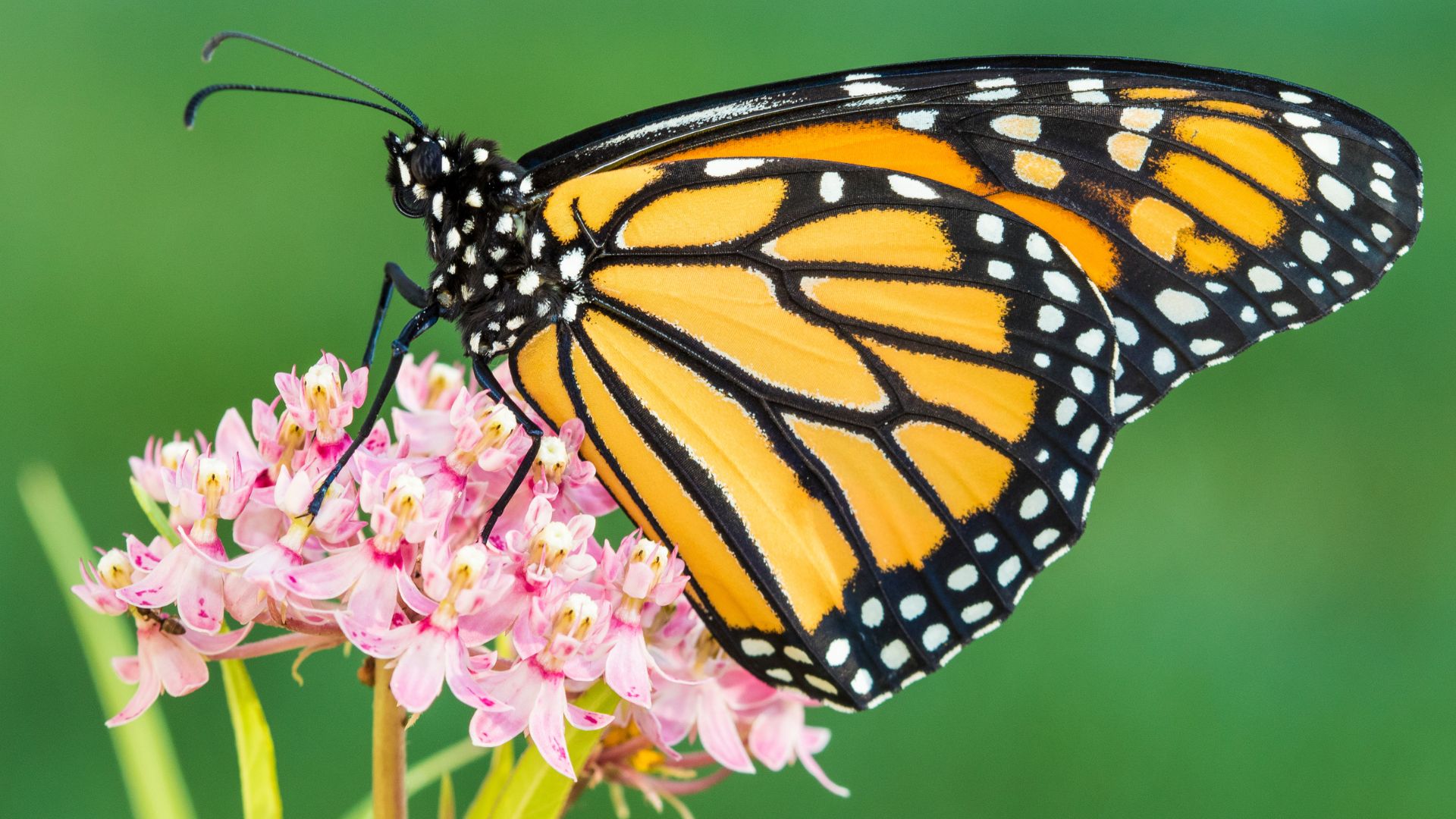 By Erica Ballard
By Erica Ballard
Recently, the migratory monarch butterfly was added to the International Union for Conservation’s (IUCN) endangered species red list. As these declining butterflies depend entirely on milkweed as host plants during their caterpillar stage, programs such as MPF’s Grow Native! program have long advocated for homeowners to plant milkweed in their yards. However, many individuals new to native gardening are unaware that “milkweed” isn’t actually just one plant. Instead, the name refers to many different species in the Asclepias genus. In fact, according to Flora of Missouri Project, there are 18 species of milkweed in Missouri, many of which occur on MPF’s 30 properties, and at least eight different species of native milkweed are sold commercially in the lower Midwest alone. For some, the question isn’t so much why plant milkweed but rather, which species to purchase?
Milkweed, like all other natives, benefits from the idea of “right plant, right place.” In other words, by considering the environmental conditions of your yard or property, you can determine which species will do best in your garden. In particular, think about soil drainage, moisture, and sunlight levels. In my gardens, I currently grow five different milkweed species, each of which serves as an important host plant for monarchs while also attracting many other native pollinators, especially bumble bees.
Swamp or marsh milkweed (Asclepias incarnata), as its name suggests, naturally grows in wet areas. I have a patch where my gutter drain spout empties, and another planting in a low spot where rain tends to collect. Consequently, only when the soil is very dry do I hand water these plants. They have a tall, upright, branching form, light pink flowers, and willowy leaves.
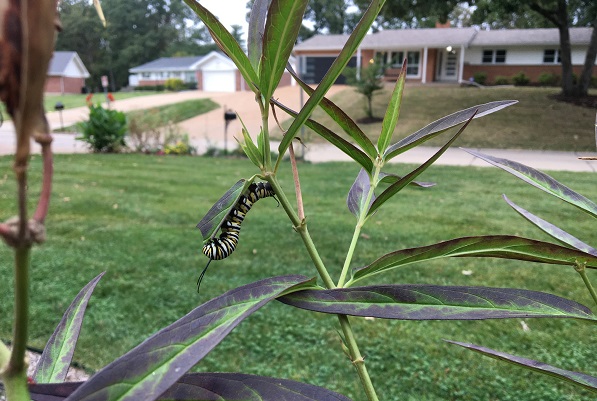
Monarch caterpillar on swamp milkweed. Photo: Erica Ballard.
Common milkweed (A. syriaca) has a similar pink flower color, but broader leaves. Mine grows in a very hot, very dry area. It is more aggressive than some of the other milkweeds and spreads through rhizomes underground. It is a good plant for a less formal space, but you may need to trim back unwanted volunteers. However, the subtle, sweet smell and big globes of pink flowers are attractive to gardeners and pollinators alike.
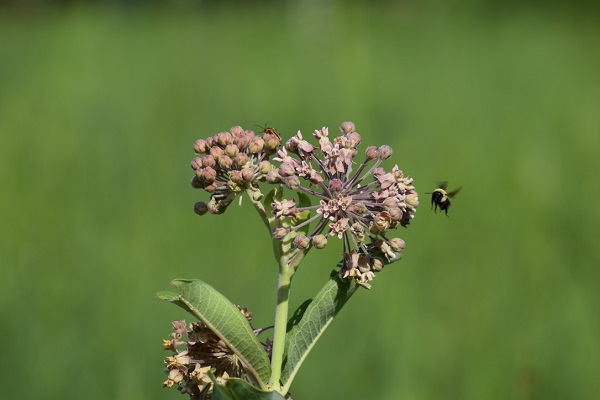
Common milkweed and bumble bee: Photo: Erica Ballard.
Another milkweed that does well in hot, dry areas is spider milkweed (A. viridis), also called “green milkweed.” In the wild, I have seen it on glades and well drained, rocky prairies. This rather unassuming plant grows only to about knee height, but has really unusual mint green flowers with pink centers. Despite its small size, I found two big monarch caterpillars on one plant last autumn.
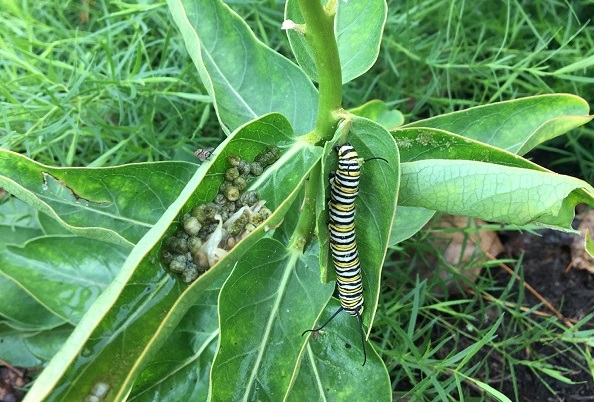
Monarch caterpillar on spider milkweed. Photo: Erica Ballard.
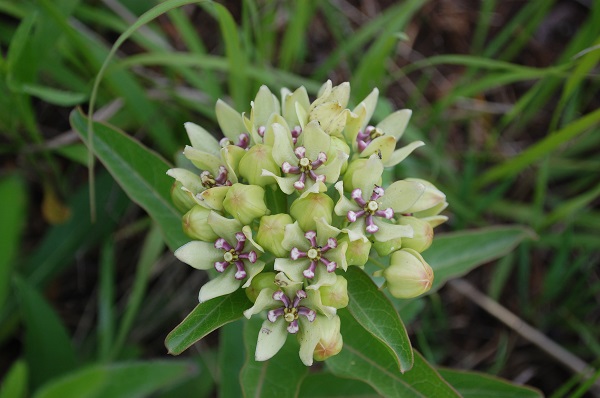
Spider milkweed flower. Photo: Elliott Duemler.
Butterfly milkweed (A. tuberosa) also maintains a short, compact stature. With dark green leaves and vibrant orange flowers, it really stands out in any garden. Bees, in particular, really enjoy this plant. It’s fairly versatile, too, growing well in both full sun and light shade conditions in my yard. I’ve had this species for many years and have been encouraged to see that it lightly spreads through seed.
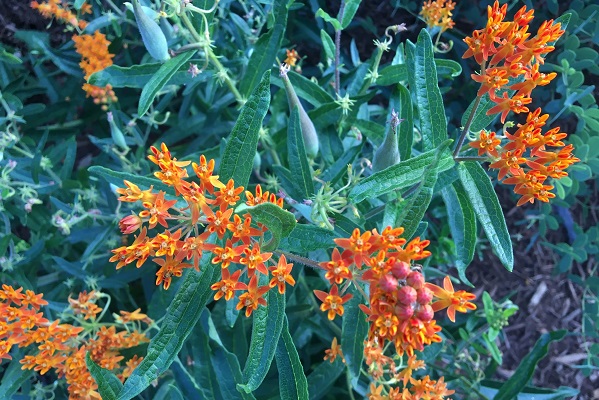
Butterfly milkweed. Photo: Erica Ballard.
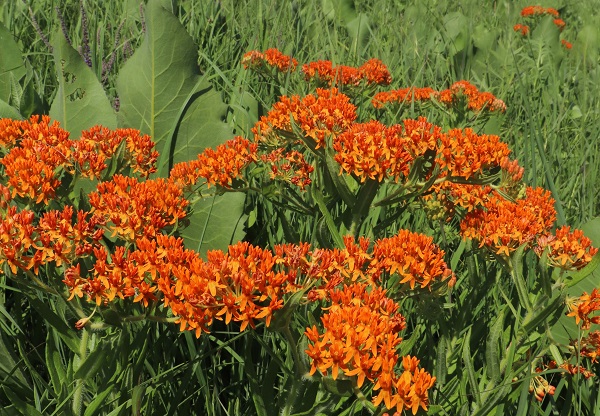
Butterfly milkweed at MPF’s Rockhill Prairie. Photo: Bruce Schuette.
A recent addition to my garden is purple milkweed (A. purpurascens). I found this milkweed to be harder to source commercially than the others, but felt that the effort was well spent. When this plant bloomed in late May / early June, I was really impressed by its deep magenta flowers. Purple milkweed is less aggressive than other types and is recommended for formal settings. Unlike many other milkweeds, it can also be grown in partial shade.
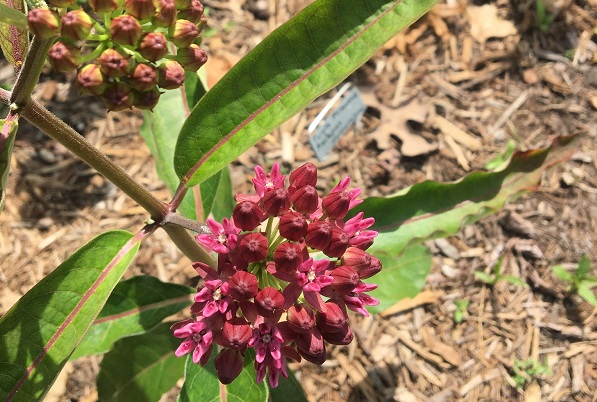
Purple milkweed. Photo: Erica Ballard.
In addition to the aforementioned species of milkweed, you might also consider adding whorled milkweed (A. verticillata), aquatic milkweed (A. perennis), and tall green milkweed (A. hirtella) to your native plantings. All of these plants are part of the genus Asclepias, which was named many centuries ago by the famed scientist Carl Linnaeus. Asclepias derives its name from the Greek God of healing. Only by choosing to incorporate more of these plants into our gardens will we finally be on the correct path for “healing” the monarch butterfly population. In August and September, I am looking forward to the southern migration of monarchs through my yard. By having a wide variety of milkweeds for these butterflies to choose from, I’m hoping my yard will be a waystation on their long journey back to Mexico.
Find out more about planting milkweed for monarchs at Grow Native!’s Natives for Monarchs webpage, and find suppliers of native plants in Grow Native!’s Resource Guide.
Erica Ballard is a curriculum developer, working for a parochial school in St. Louis, and an education consultant working on contract for the Missouri Prairie Foundation and its Grow Native! program.
Photo of monarch butterfly on milkweed flower, at top, by Noppadol Paothong.

